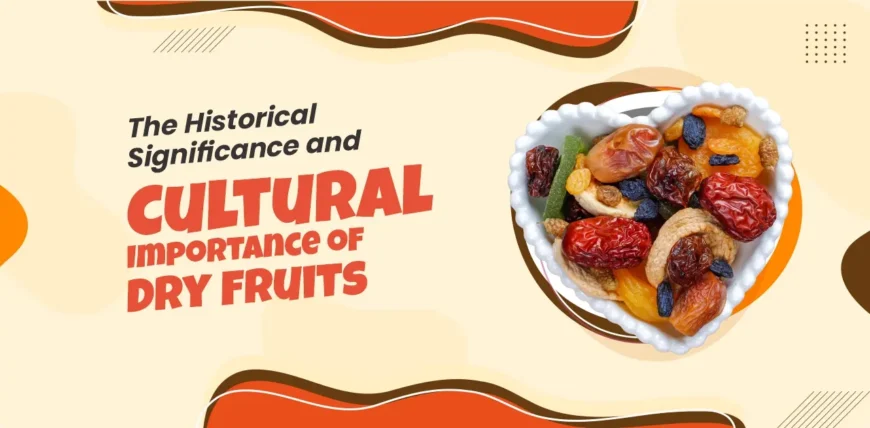Dry fruits have a rich historical significance and hold cultural importance in various societies around the world. These preserved fruits have been cherished for centuries and play a significant role in culinary traditions, religious practices, and customs. Let’s explore the historical and cultural significance of dry fruits:
Preservation Method
- Drying fruits was initially practiced as a means of preservation, allowing people to store fruits for extended periods without spoilage.
- Ancient civilizations, such as the Egyptians, Greeks, and Persians, sun-dried various fruits to ensure a year-round food supply, especially during scarce seasons.
Trade and Commerce
- Dry fruits played a pivotal role in ancient trade routes, such as the Silk Road, connecting Asia, Europe, and Africa.
- Valued for their long shelf life and portability, dry fruits were highly sought-after commodities, representing wealth and luxury.
Culinary Traditions
- Dry fruits have been integral ingredients in traditional cuisines worldwide, adding flavor, texture, and nutritional value to a range of dishes.
- Middle Eastern and Indian cuisines, for example, feature dried fruits in various recipes, like stews, rice dishes, and desserts.
Festive and Religious Celebrations
- Dry fruits hold significant cultural importance during festive seasons and religious celebrations.
- In many cultures, dried fruits are used in traditional sweets and desserts prepared for special occasions, such as Eid, Diwali, Christmas, and Passover.
Symbolism and Rituals
- Dry fruits often carry symbolic meaning and are used in rituals and ceremonies.
- For instance, dates hold religious significance during Ramadan, while dried nuts and fruits are used in ceremonial dishes during weddings and other festive events.
Traditional Medicine and Remedies
- Dry fruits have been used in traditional medicine systems, such as Ayurveda and Traditional Chinese Medicine, for their medicinal properties.
- Many cultures believe that certain dried fruits possess healing qualities, aiding digestion, boosting energy, or alleviating specific ailments.
- Dry fruits are frequently exchanged as gifts on cultural occasions, signifying generosity and good wishes.
- They are also offered as a gesture of hospitality and respect to guests and visitors from various cultures.
Art and Craftsmanship
- Dry fruits have been used as artistic elements in decorative crafts, such as potpourri, mosaics, and ornaments.
- They add natural textures and colors to create intricate designs and patterns.
Conclusion
The historical significance and cultural importance of dry fruits continue to unify communities and highlight the diverse culinary heritage across different regions. Whether enjoyed in festive dishes, used for ceremonial purposes, or cherished as symbols of abundance and prosperity, dry fruits remain an integral part of cultural traditions, customs, and social connections around the world. Our amazing 2020 dried fruits are rich in vitamins, and minerals and have numerous health benefits. Include our premium quality 2020 dry fruits in your daily life and relish their goodness. For more such informative articles follow us on Instagram 2020_dryfruits and shop our products from our website https://2020dryfruits.com/





